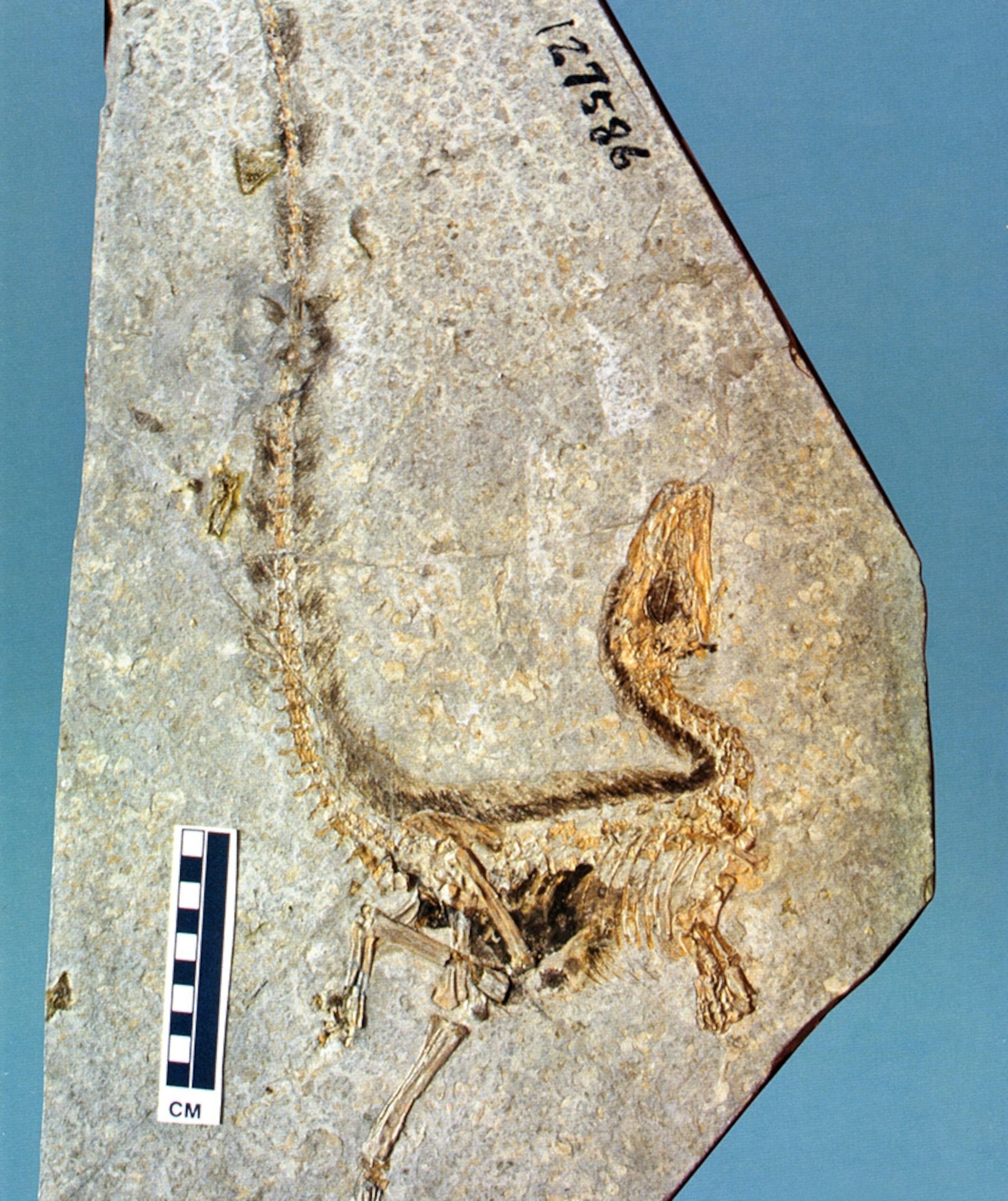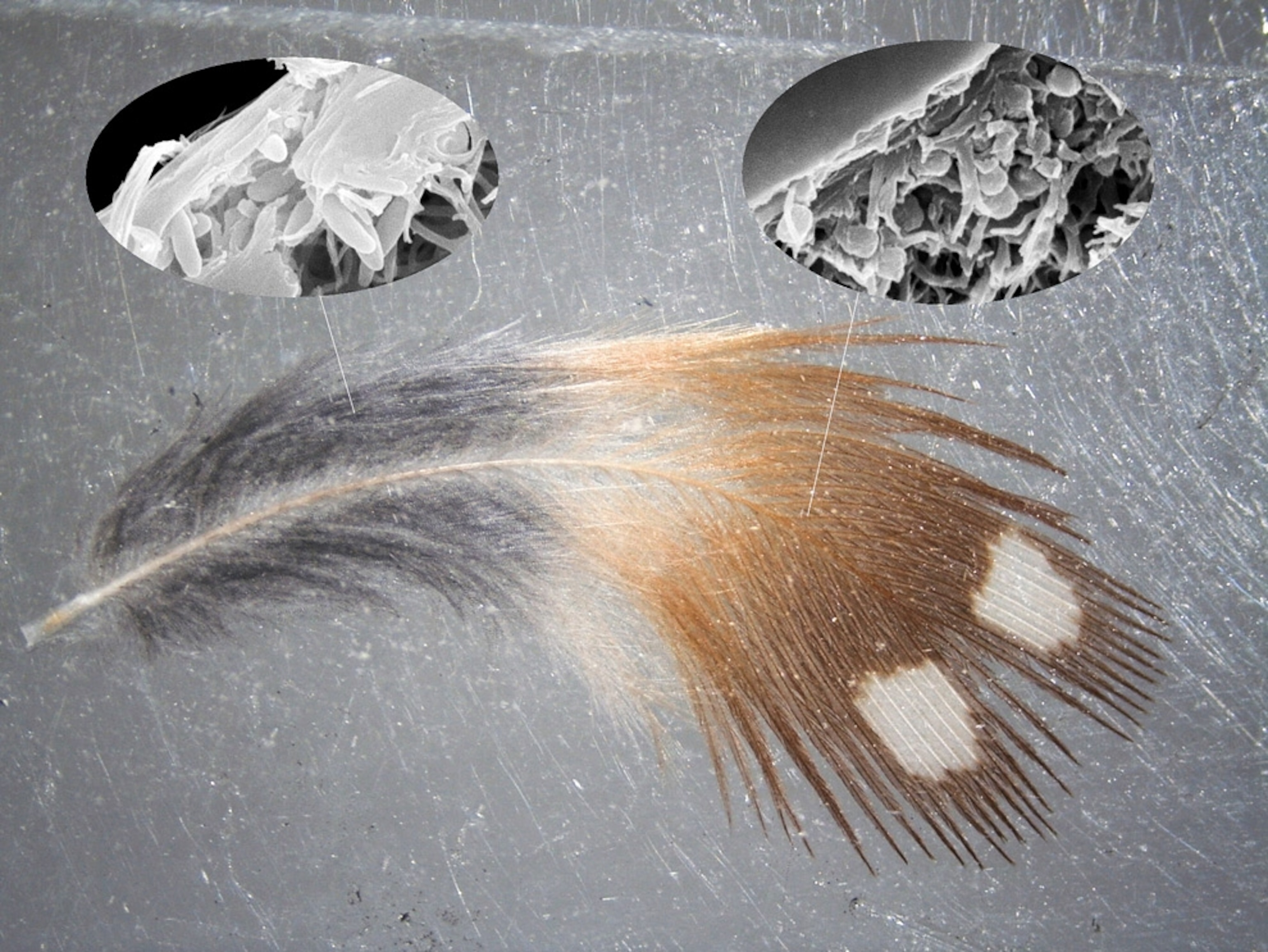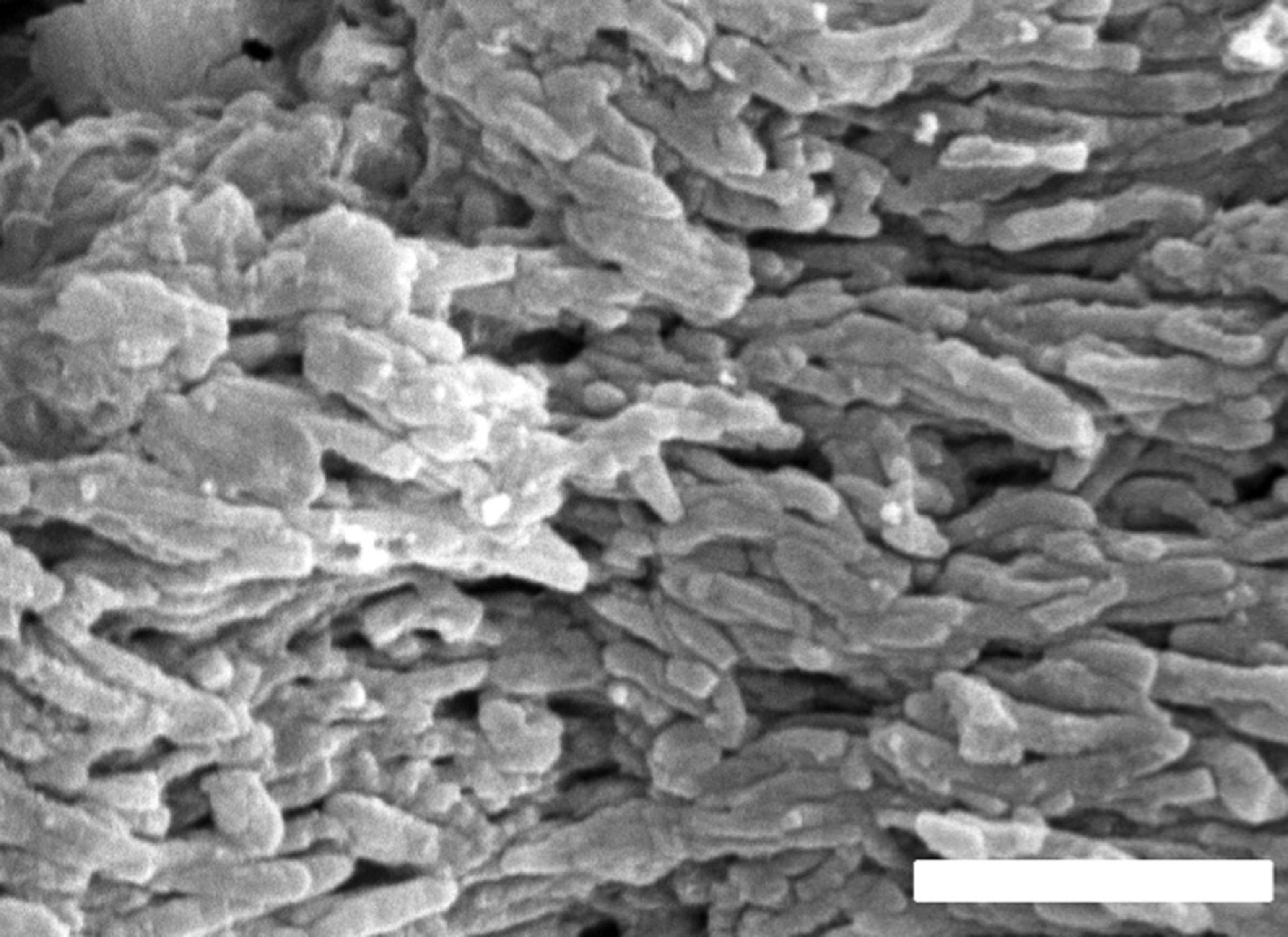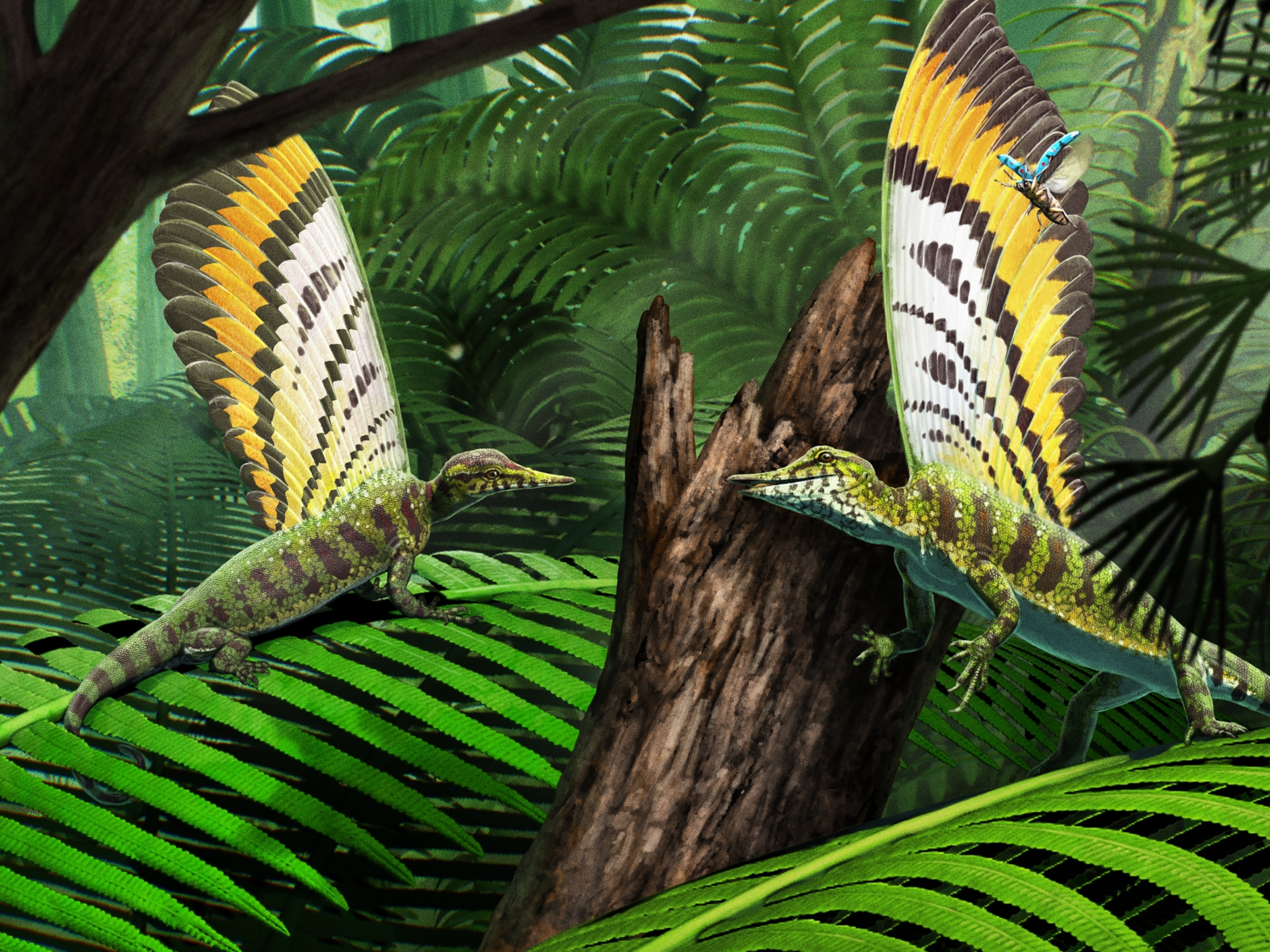Sinosauropteryx, a turkey-size carnivorous dinosaur, is the first dinosaur—excluding birds, which many paleontologists consider to be dinosaurs—to have its color scientifically established.
In 1996, Sinosauropteryx was also the first dinosaur reported to have feathers. It was found in the Yixian formation, 130- to 123-million-year-old sediments in Liaoning Province in northeast China, which have since produced thousands of apparently feathery fossils.
In a report released online today by the journal Nature, an international team of paleontologists and experts in scanning electron micrography infer that this dinosaur had reddish orange feathers running along its back and a striped tail. (Read the full story: "True Dinosaur Colors Revealed for the First Time.")
Why would a dinosaur need a striped tail? Many birds, the living descendants of non-avian dinosaurs, use brightly colored tails for courtship displays.
(Related pictures: "What's Wrong With This Picture? An Audio Critique [of Dinosaur Art].")
—Chris Sloan, National Geographic magazine paleontology editor








